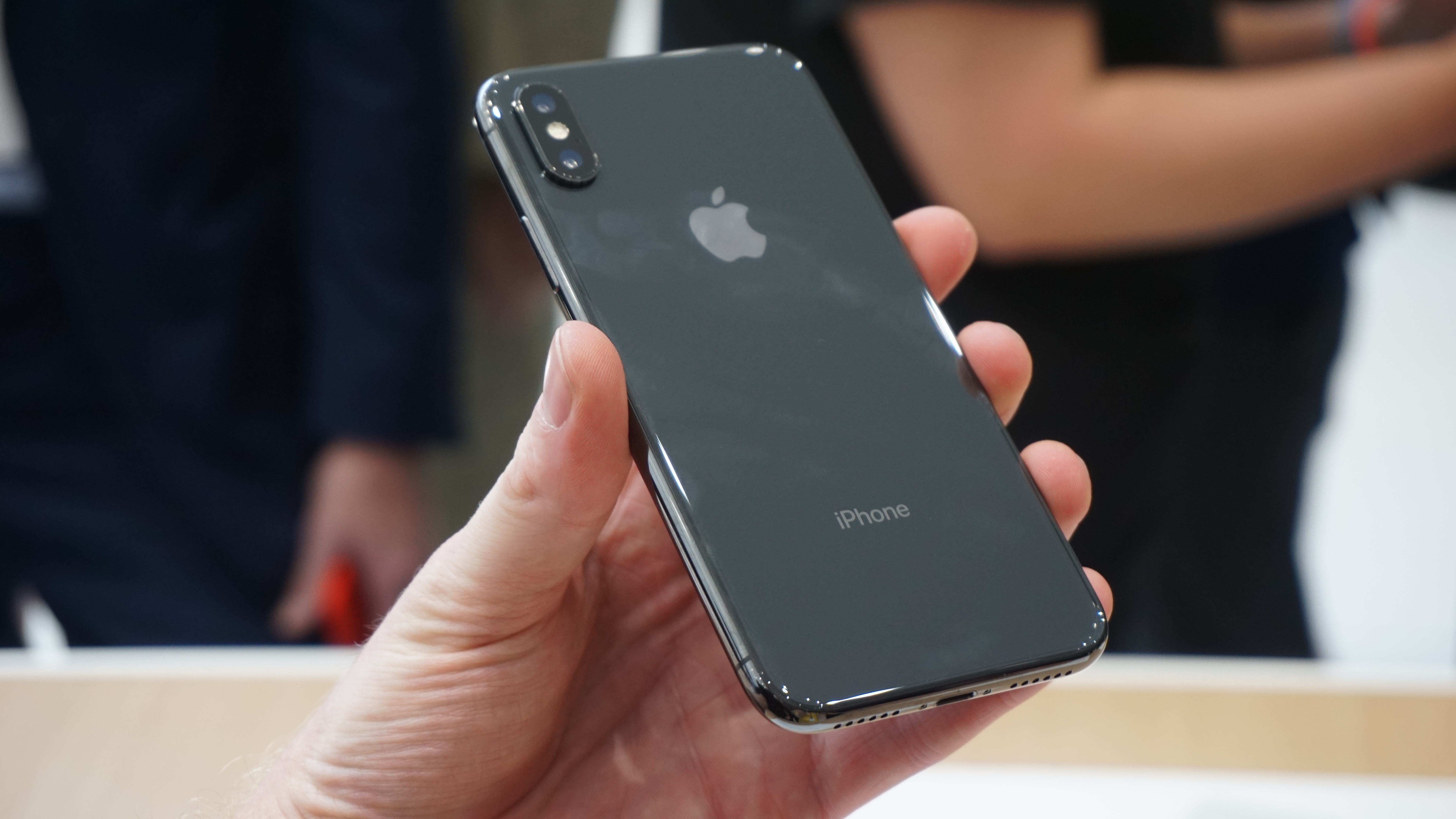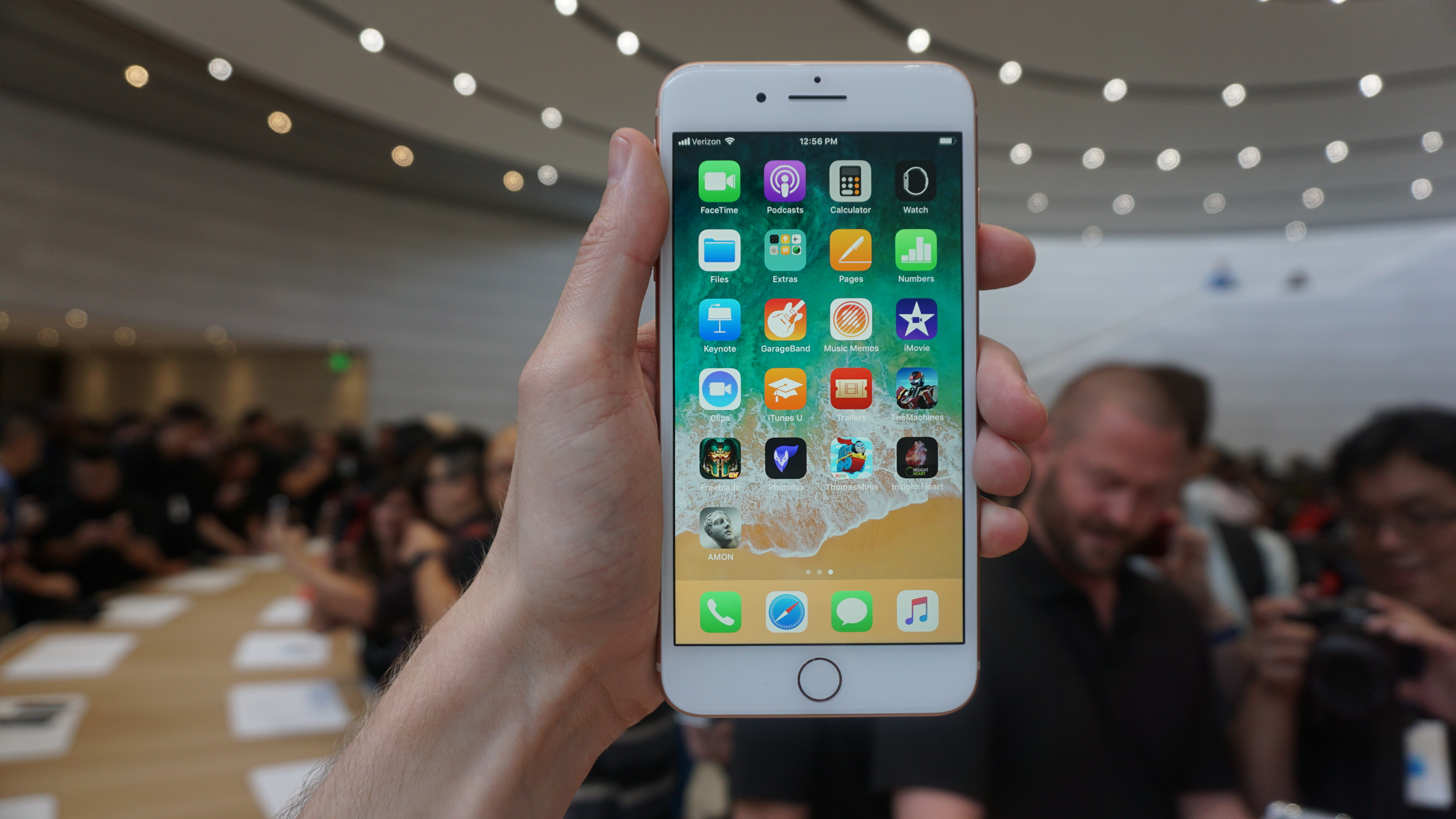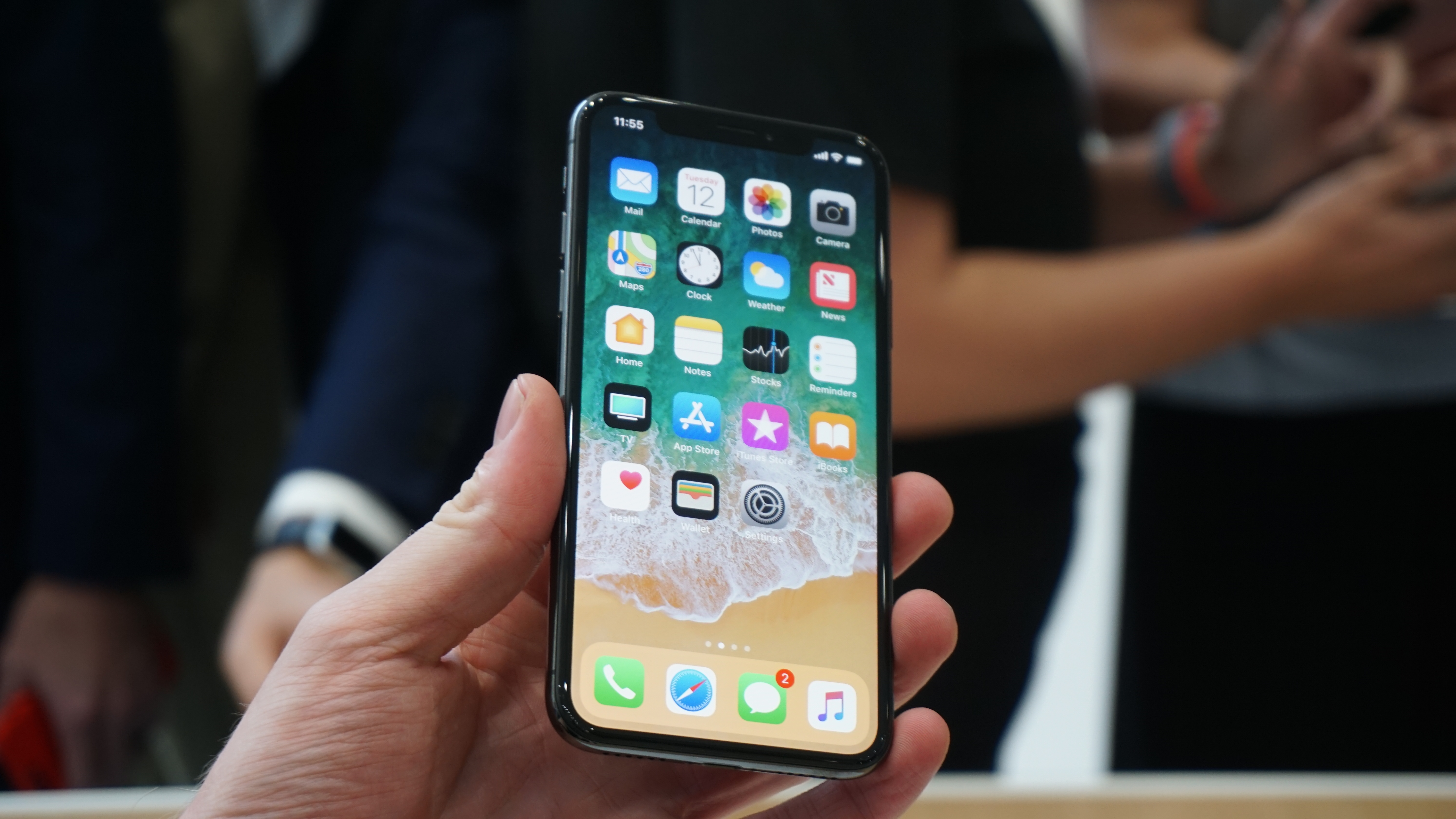iPhone X vs iPhone 8 Plus
Big phone battle

For once the ‘Plus’ model isn’t Apple’s biggest screen iPhone of the year. Nor is it the most expensive or most feature-packed, because this year we got the iPhone X.
Apple’s new flagship is the biggest change to the iPhone design in years, though we still got another ‘Plus’ model launched alongside it, in the form of the iPhone 8 Plus.
But just how different are these two big screen phones? The short answer is: very. For the long answer read on below, as we compare them across all the key points.
iPhone X vs iPhone 8 Plus design
Viewed front-on these are immediately very different phones, as while the iPhone 8 Plus has a very conventional look, with large bezels above and below the screen and Apple’s near iconic circular home button, the iPhone X gets rid of the bezels almost entirely, with just a small notch jutting out of the top.
It also ditches the home button, and by getting rid of that arguably wasted space Apple has managed to keep the dimensions down to 143.6 x 70.9 x 7.7mm, while the iPhone 8 Plus is 158.4 x 78.1 x 7.5mm.
That’s a big deal, as it means the iPhone X is actually a significantly smaller phone overall than the iPhone 8 Plus, despite having a bigger screen. As you might expect based on that, the iPhone 8 Plus is also heavier than the 174g iPhone X at 202g.

That said, not everything about the designs is completely different. They both have a glass back and a metal frame, and both have a dual-lens camera on the back, though the iPhone X’s is vertically aligned, while the iPhone 8 Plus’s is horizontal.
Get daily insight, inspiration and deals in your inbox
Sign up for breaking news, reviews, opinion, top tech deals, and more.
Both phones are also IP67 certified dust and water resistant, so they can be submerged up to 1 meter deep in water for up to 30 minutes, and they’re available in similar colors. The iPhone X comes in Space Grey or Silver, while the iPhone 8 Plus is sold in Space Grey, Silver and Gold.
iPhone X vs iPhone 8 Plus display
Both of these phones have big screens, especially compared to the 4.7-inch iPhone 8, but the iPhone X has the larger display at 5.8 inches. It has a 1,125 x 2,436 resolution, giving it a pixel density of 458 pixels per inch.
The iPhone 8 Plus on the other hand has a 5.5-inch 1,080 x 1,920 screen with a pixel density of 401 pixels per inch, so the iPhone X’s is higher resolution and sharper.
They also use different display technologies. The iPhone X uses AMOLED, which allows for blacker blacks than the LCD iPhone 8 Plus, as the pixels are lit up individually, meaning they can also be completely turned off, resulting in deeper blacks.

As such contrast should be better on the iPhone X, and colors are generally richer. And the iPhone X is the first iPhone to display HDR video content.
Not everything is different though, as both the iPhone X and the iPhone 8 Plus benefit from True Tone screens. That’s a technology inherited from the iPad Pro range, which automatically adjusts the white balance of your display based on your environment.
iPhone X vs iPhone 8 Plus biometric security
While Apple’s on-stage Face ID fumbles might not have been the introduction to the company’s facial recognition technology it had been hoping for, the tech still holds a lot of promise and is one of the biggest differences between the iPhone X and the iPhone 8 Plus.
Because while the iPhone X has Face ID, letting you unlock your phone just by looking at it, the iPhone 8 Plus doesn’t, instead relying on a Touch ID fingerprint scanner.
But in the process of removing the bezel from the iPhone X Apple also removed Touch ID, so you can have one biometric option or the other, but not both.
OS and power

Both the iPhone X and the iPhone 8 Plus run iOS 11, with the only substantial difference there being that in the absence of a home button on the iPhone X you can return to the home screen with a swipe up from the bottom edge of the screen.
Both phones also have a hexa-core A11 Bionic chipset and both are believed to have 3GB of RAM, so this is one area where they’re more or less identical.
iPhone X vs iPhone 8 Plus camera and battery
The iPhone X and iPhone 8 Plus both have 12MP dual-lens cameras on the back, allowing them to optically zoom and use depth of field effects in photography, but there are some subtle differences between them.
For one thing, while both of the iPhone X’s lenses have optical image stabilization only one of the iPhone 8 Plus’s does, so when using the telephoto lens on the iPhone 8 Plus your image won’t be stabilized.
Also, while both phones have an f/1.8 aperture wide-angle lens, the aperture of their telephoto lenses differs. The iPhone X has an f/2.4 aperture one, while the iPhone 8 Plus has an f/2.8 aperture one – meaning the opening on the 8 Plus is smaller, so less light can get in.
In our review, we noted how the 8 Plus is much noisier in low light using the zoom, so this should be significantly improved on the iPhone X.

As for the front-facing camera, the iPhone X has the edge there too, at least on paper, as while both phones have a 7MP f/2.2 snapper, the iPhone X can tap into its Face ID tech to allow for depth adjustments in photos, and for ‘Animoji’, which are emoji that mirror your expressions and even your mouth movements when you talk.
The iPhone X also probably has a bigger battery than the iPhone 8 Plus. While the X’s battery size hasn’t been officially confirmed yet, it’s reportedly 2,716mAh, while the iPhone 8 Plus has a 2,691mAh battery.
The difference is small then, though in some ways it’s surprising that the iPhone X’s is bigger at all, as while it has a larger screen the iPhone 8 Plus has a larger body, so you’d think there’d be room for a larger battery.
The iPhone 8 Plus may last marginally longer though, as Apple claims that it can survive through up to 14 hours of video or 13 hours of internet use, while the figures for the iPhone X are an hour less. Both phones support wireless charging.
iPhone X vs iPhone 8 Plus price
The iPhone X is $999 / £999 / AU$1,579 for the smallest (64GB) model and reaches $1,149 / £1,149 / AU$1,829 for a 256GB one.
The iPhone 8 Plus is cheaper but still very expensive, at $799 / £799 / AU$1,229 for a 64GB handset and $949 / £949 / AU$1,479 for a 256GB one.
Takeaway
The iPhone X and iPhone 8 Plus are two of the most expensive phones on the planet. They’re also both pretty large and have a lot else in common, from their operating system to their power to the presence of dual-lens cameras.
But there are also plenty of differences here. The iPhone X has a larger screen and a smaller body, and is also undeniably higher end, with a sharper display, and facial recognition in place of a fingerprint scanner. It's also much nicer to hold in the hand.
Check out our overview video of the iPhone X below
The camera, while similar, is better on the iPhone X too (although we've not tested it for long), although in terms of battery life the iPhone X is tipped to last for a shorter time.
Ultimately though these are both high-end handsets and if you want a brand-new, big screen iPhone you've got more options than ever before.
See the iPhone 8 Plus in action below
James is a freelance phones, tablets and wearables writer and sub-editor at TechRadar. He has a love for everything ‘smart’, from watches to lights, and can often be found arguing with AI assistants or drowning in the latest apps. James also contributes to 3G.co.uk, 4G.co.uk and 5G.co.uk and has written for T3, Digital Camera World, Clarity Media and others, with work on the web, in print and on TV.